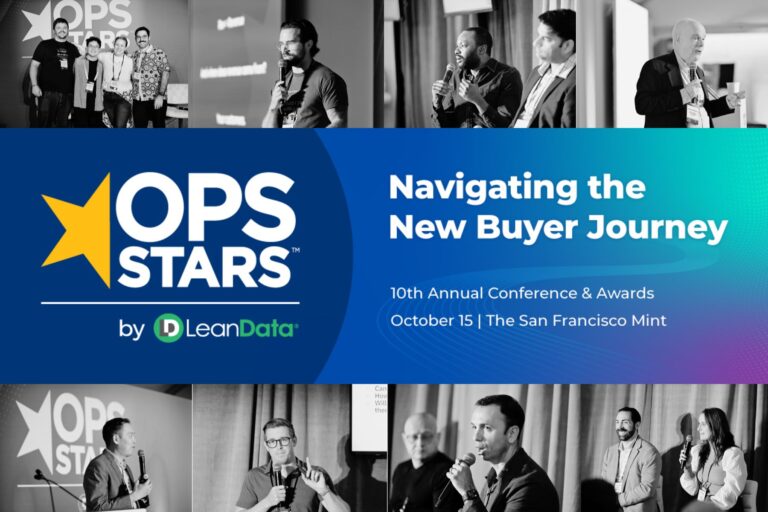There’s a different B2B buying journey out there and sellers must take notice.
Hey, I get it — times are tough, and seemingly all over at that.
For struggling revenue teams, it’s easy to point a finger at a challenging economy. But, experienced marketers and sellers have navigated challenging economies before. Many times in the past, solutions centered on simply out-working the competition. The more you called, mailed and emailed — the more you hustled and the harder you worked — the more successful you became.
However, for revenue teams this time around, it’s more complicated than just a challenging economy. While the economy certainly has its impact, the biggest impact to marketers and sellers is a decidedly different B2B buying journey.

It’s Not Just the Economy, the B2B Buying Journey Has Changed
Someone once told me that if you point your index finger out at someone/something in a gesture of blame, the keen eye will note three fingers are pointing right back at yourself.
The economy is a challenge. But, it doesn’t make you special. If the economy is a challenge for you, it’s a challenge for every one of your competitors. And, if it was the only obstacle to overcome, then maybe, just maybe, out-hustling and out-working your competition might work.
However, B2B buyers and their buying journeys have changed considerably the past few years. Trying to out-work your competitors by forcing an increasingly outdated and unfashionable selling process onto your customers is much like trying to hammer a square peg into a round hole.

Let’s not just point at the economy. Rather, let’s take note of what those fingers pointing back at us suggest as things we can control to better meet our own goals and objectives.
B2B Buyers No Longer Act in Isolation
Unless an organization is a small, emerging business, most B2B procurement involves buying groups or buying committees. While the ultimate decision might come down to an individual, that individual most often drives a consensus with a larger team within the organization.
As a result, traditional lead generation and lead management processes of yesteryear are increasingly inefficient. Uncovering and nurturing leads might ultimately lead to a Closed/Won deal, but it’s not a linear process. Because the decision maker needs to get the necessary information to other stakeholders of the buying group, there are unnecessary time delays. More importantly, marketers and sellers are dependent on leads to pass along the right information to buying group members at the right time.
With buying groups becoming much more prevalent, it’s important for B2B marketers and sellers to deploy demand generation strategies and tactics. Doing so creates more board brand awareness and product/service/solution education across the entire account. Among the benefits is a shorter sales cycle, which increases the efficiency of scarce revenue team resources.
Prescriptive actions: 1) Build a complete picture of an account’s buying group, 2) Deploy a “digital everywhere” strategy for the account, and 3) Engage and educate buying group members through the middle of the funnel.

B2B Buyers Want to Self-Serve Part or All of Their Buying Journeys
All the individuals in a B2B buying group are accustomed to world-class customer experiences in their B2C buying journeys, where they routinely self-serve their entire experience. Now, they’re bringing those same expectations directly to the workplace.
In TrustRadius’ most recent B2B Buying Disconnect report, it was reported that virtually 100 percent of buyers desire to self-serve part or all of their buying journeys. The top item buyers want potential vendors to provide as a self-serve option is software pricing. Not only do 81 percent of buyers want to find pricing information on their own, but 16 percent will eliminate a potential vendor for not including transparent pricing information online.
Furthermore, the study reported 40 percent of buyers named “having to contact sales for a demo or free trial” among the three things potential vendors do to make them less likely to buy. Cold calling was named as the number one reason they are less likely to buy from a potential vendor.
So, how does that information match — or mismatch — with your selling process in a difficult, challenging economic environment? With an impulse to out-work and out-hustle your competition, many organizations might be tempted to increase their proactive, outbound initiatives. However, data related to buying journeys suggest the efficacy of aggressive outbound motions might be severely compromised. Trying harder by using old tactics might just be counterproductive.
Prescriptive actions: 1) Create a digital buyer’s journey, and 2) Combine inbound and outbound motions to meet buyers along their journeys, providing information at the time when needed.
Control What You Can Control
It’s tempting for Sales and Marketing teams to point their fingers at a challenging economy as the root of any current evils related to missed quotas and sales pipeline objectives. However, misdiagnosing the entire root cause is no way to effectively and efficiently recover.
The economy is a significant challenge in today’s competitive environment, of that there is no doubt. However, not only is it the same for everyone, it’s also not the only challenge. The B2B buyer now exhibits new behaviors, and old ‘best practice’ remedies of the past are not nearly good enough to prevail again. So, before you set off to simply out-work your competition, consider how changing buying journeys dictate needed changes to your revenue team processes.










